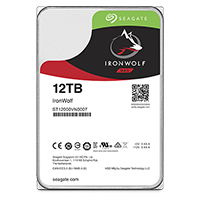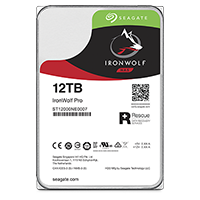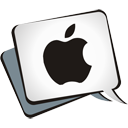If you are a regular visitor to Apple Tech Talk, you know we have done several reviews of Synology hardware and software, including our three part review of the DS-216 (Read Part 1 here), and the DS418j (read our review here). We have also kept you up to date on advances to the Synology Disk Station Manager (“DSM”) operating system, including some of the most recent announcements about the release of the Moments, Drive and Office applications (read the release announcement here), and most recently, the announcement that the Synology C2 Backup service is available to users worldwide (read the announcement here). We’ve been checking out the new software but before we report out on that, we wanted to introduce you to the Synology DS218+, another great Synology NAS that we have been using for testing.
Disclosure: Apple Tech Talk participates in various affiliate marketing programs and may receive compensation if you purchase a product through one of our links, and/or in the form of product donations from the companies whose products we review . Unless otherwise specifically stated, Apple Tech Talk does not receive any other compensation for its reviews. The opinions expressed are based solely on our independent testing, are our own and are not shared with anyone prior to release on our site.
Apple Tech Talk Scorecard
| Pros | Cons |
| Small form factor for easy placement | Only one Ethernet connection on rear panel |
| Runs the same DSM operating system | |
| Powerful hardware at a reasonable price |
Synology DS218+ – Unboxing
The Synology DS218+ is a 2-bay Network Attached Storage (“NAS”) device and is the smallest model in the Synology “+” series. In the box is the DS218+, the AC Power Adapter, an AC Power Cord, an RJ-45 LAN Cable, an Accessory Pack with screws to mount SSDs (if applicable) and a Quick Installation Guide.
Being a 2-bay NAS, it is fairly small in size, measuring 6.49” x4.25” x 9.14” and weighing a mere 2.8lbs (without disks installed). The unit could easily fit on the corner of your desk or on a small shelf nearby. The DS218+ uses the same tool-less disk carriers we have seen in all of the other Synology devices we have reviewed and unlike the DS418j, sit behind an easily removeable front cover that also requires no tools to gain disk access.

The DS218+ has all the connections and indicators you would expect in a top of the line NAS without adding any unnecessary clutter to the front panel.
On the front panel are four (4) LED indicators for status, LAN and drive status. Below that is a USB 3.0 port for external drive connection, a USB Copy button and the Power button with an integrated LED indicator.
On the rear of the DS218+ are two USB 3.0 ports, a single Gigabit Ethernet port and an eSATA port. Also on the rear panel is the AC power connection, the Reset button and a Kensington Security slot.
We were a little disappointed to find only one Ethernet connection on the rear panel. While a 2-bay NAS is probably not often used in mission critical situations, ever home users, with newer routers could benefit from port bonding or having built-in fail-over.
Synology DS218+ – Specifications
For those of you that like facts and figures the Synology DS218+ has a Intel Celeron J3388, 62-bit Dual-Core processor operating at 2.0 GHz with burst up to 2.5 GHz. It includes AES-NI hardware encryption as well as a 4K Ultra HD video transcoding engine. It comes with 2 GB of DDR3L memory in one of its two memory slots and is expandable to 6 GB (2 GB + 4 GB).
The DS218+ has a single rear mounted multi-speed fan that measures about 3.6” (92mm) square and the unit is rated at 19.3 Db. The fan can be set to run in Quiet, Cool or Full Speed mode. In real-world usage, we found the unit to be extremely quiet and would not expect noise to be an issue.
The drive bays can accommodate 3.5” SATA HDDs, 2.5” SATA HDDs and 2.5” SATA SSDs. The 3.5” dives are easily mounted in the tool-less drive carriers while the 2.5” drives need to be screwed into the carriers using the included screws. Maximum internal storage capacity is 24 TB (12 TB drives X 2) but will vary based on the RAID type used.
The Synology DS218+ supports the Btrfs and EXT4 file systems internally and a wide variety of other file systems for external drives, including the Mac native HFS+. In our experience, connecting a Mac formatted drive to all the Synology NAS units we have tested was effortless.
Synology DS218+ – Hard Drives
The Synology DS218+ is generally sold diskless which means you will have to select the drive(s) you want in it. Our test unit came with two Seagate IronWorld Pro 10 TB HDDs. If you are not familiar with the IronWolf series, or even why you need a NAS drive rather than a drive you would use in your computer, we suggest you check out our review of the IronWolf HDD we published in September 2017 and available here.
 |
 |
|
| Perfect for | Connected home, SOHO, and SMB NAS | Commercial and Enterprise NAS |
| # of Bays | 1 to 8 bays | 1 to 16 bays |
| Capacity | 12TB, 10TB, 8TB, 6TB, 4TB, 3TB, 2TB, 1TB | 12TB, 10TB, 8TB, 6TB, 4TB, 2TB |
| NAS-Optimization | AgileArray™ | AgileArray |
| Rotational Vibration Sensors | 12TB, 10TB, 8TB, 6TB, 4TB | Standard |
| Rescue Services | Optional | Standard |
| Multi-User Optimized | 180TB/year user workload rate | 300TB/year user workload rate |
| Cache | Up to 256MB | Up to 256MB |
| Mean Time Between Failures (MTBF) | 1 million hours | 1.2 million hours |
| Warranty | 3 years | 5 years |
We were thoroughly impressed with the IronWolf drives when we first tested them, and the IronWolf Pro drives certainly did not disappoint either. While either series would be an excellent choice for any NAS unit, the 5-year warranty and included 2-year Rescue Data Recovery Service make the Pro series a best-in-class choice.
We can also report that we found the IronWolf Pro drives to be extremely quiet with no noticeable vibration during periods of drive spin-up or intensive data read/write activity.
Synology DS218+ – Test Results
Our set-up of the DS218+ was typical of the other Synology NAS units we have worked with. With the disks installed, the power supply connected and the NAS connected to our Airport Extreme Base Station, we powered up the unit and in went through its own set-up process.
Connecting the NAS to our network was as easy as opening a web browser and entering find.synology.com. The DS218+ walked us through the process of setting up an administrator and completing the basic configuration of the DSM operating system.
From start to finish the entire process took about 20-minutes but was effortless and once completed our Synology NAS was ready for use.
We are not going to go over the DSM system in detail as we have covered it in our prior reviews and encourage you to check those out for additional details.
What we will say is that the functionality of Synology DSM along with the various additional packages they offer, most of which are free, continues to improve all the time. The ability to control the functionality of your Synology NAS, along with the colorful and easy to use interface may be, in our opinion, the best NAS operating system on the market today.
The Bottom Line
We have always been fans of Synology and the DS218+ is no exception. As a 2-bay device, it is perfectly suited for the home or even a small office. The ability to load data from front mounted USB 3.0 port or use the rear USB 3.0 ports to support a back-up HDD makes this a great way to protect all of your data.
With support for 4K HD video transcoding, the Synology DS218+ is a great choice as a home media server while still supporting any file serving and storage needs you may have.
The Synology DS218+ comes with a 2-year manufacturer’s warranty and is available at the very affordable price of just $298.00 (diskless). The Synology DS218+ is available from Amazon and in the Apple Tech Talk Marketplace.
Don’t forget to check out the IronWolf Pro drives, also available from Amazon.
But we’re not done yet. With the DS218+ up and running, it’s time to check out the great new software features mentioned at the start of this article. We’ll cover that and more in Part 2 of our review which you can read here.
If you liked this article, please consider sharing it with your friends and leaving a comment below.
Also, don’t forget to “Like” us on Facebook, “Follow Us” on Twitter and add the Apple Tech Talk channel to your Apple News app.
Apple Tech Talker



[…] to the DS218+, which we reviewed in May 2018 (read our full review here), the DS218 is a 2-bay Network Attached Storage device. In the box is the DS218+, the AC Power […]